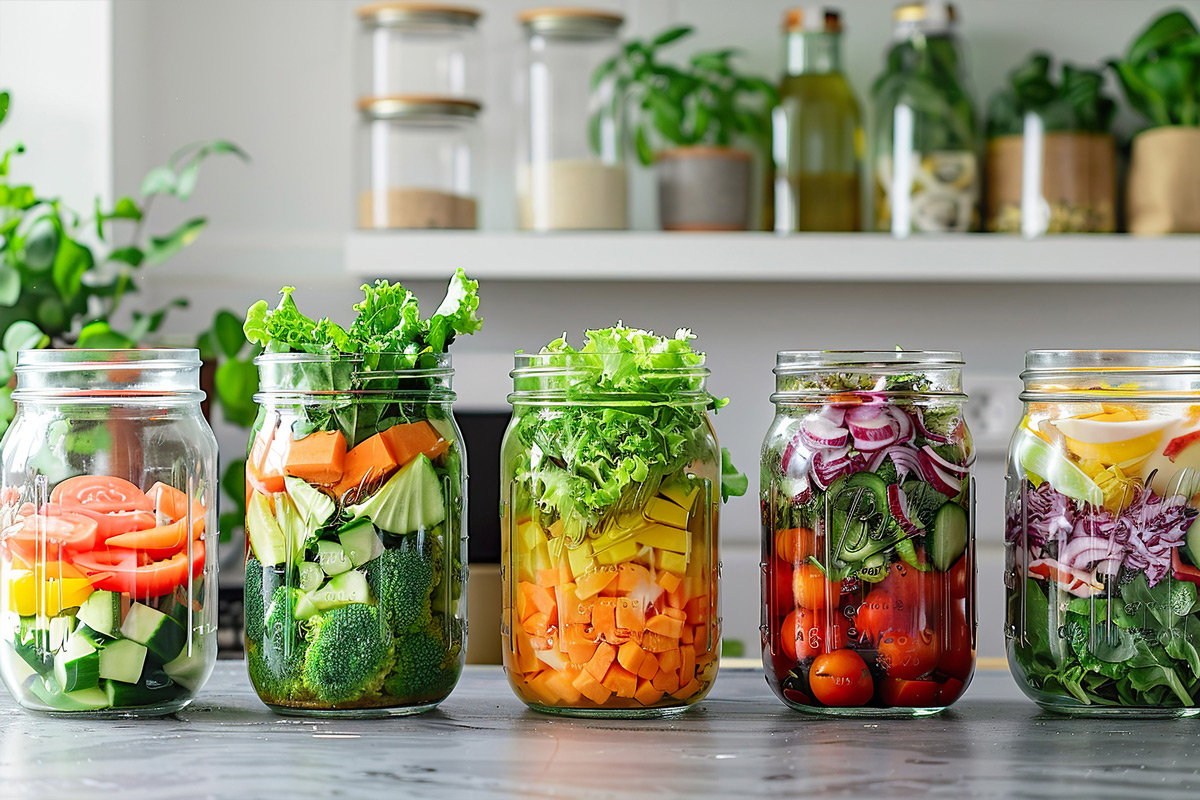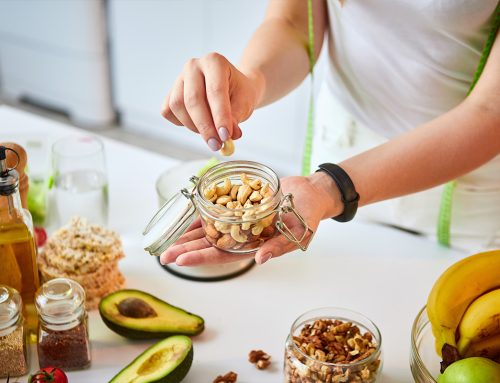At LIVE TULA, we’re all about making life easier, especially for those juggling work, family, and personal time. With so many obligations and worries, finding ways to simplify your daily routine can be a game-changer.
Enter meal planning—a powerful tool that can save you time, money, and stress while helping you achieve your health goals. Whether you’ve been hesitant to start or have tried it before without much success, we’re here to share five simple strategies to make meal planning a seamless part of your life. Let’s dive in and discover how meal planning can bring more ease and joy to your busy days!
1. Vary It Up with Spices and New Flavors
When people first start meal prepping, it can sometimes turn out bland and feel like more of a hassle than a help. Counter this with the following tips:
- Incorporate Seasonal Produce: Seasonal fruits and vegetables are often fresher and more nutritious. Visit local farmers’ markets or check your grocery store for seasonal options.
- Mix Up Your Proteins: Instead of always using chicken or beef, try plant-based proteins like tofu, tempeh, lentils, or beans.
- Swap Grains: Replace common grains like rice and pasta with quinoa, farro, bulgur, or barley. These grains offer different textures and nutritional benefits.
- Use Different Spices and Herbs: Spices and herbs can transform the flavor of your dishes. Experiment with options like everything bagel seasoning, dill, cumin, turmeric, cinnamon, garam masala, smoked paprika, ginger, lemon pepper, and herbs like basil, cilantro, and rosemary. If you aren’t sure what you’ll like or want more variety, try prepping your food without spices, so you can add different flavors when assembling meals.
- Try New Recipes Regularly: Experiment with different cuisines and cooking methods. As you explore recipes, remember that simple substitutions can make them more nutritious. For example, add ripened fruit instead of extra sugar, try veggie pasta varieties, add vegetables where you can, and use olive or avocado oil instead of vegetable, canola, or corn oil.
2. Proportions for Balance
Sometimes we have great food and healthy intentions, but our plates show the wrong proportions. For example, it’s easy to focus too much on protein and not enough on produce. Instead of focusing solely on portion sizes, consider the proportions of different foods in your prep containers. Aim for 75% or more of your container to be filled with plant-based foods. These foods are rich in fiber, which helps slow the absorption of sugar into the bloodstream. Add a sprinkle of healthy fat—about a thumb-sized portion per dish is ideal! This can be as simple as adding pepitas (green pumpkin seeds), avocado for extra flavor, or a bit of olive oil and vinegar dressing. Once you’ve mastered these proportions, functional meal prep becomes easier than ever!
Plant-based foods can be both savory and sweet, so they don’t have to be just veggies or salads! Some examples of plant-based meals include peanut butter and berries or a peanut butter and applesauce sandwich (instead of jelly with added sugar or high-fructose corn syrup), trail mix, quinoa and kale salad with pistachios and dried cherries, chia seed pudding, or Asian stir-fry. Alternatively, a 100% plant-based plate is also a great option.
3. Planning Snacks
Often, snacks can be the culprit when trying to maintain your nutritional goals. However, this doesn’t have to be the case! Snacks can play an important role in maintaining healthy blood sugar by providing energy between meals, curbing hunger, and preventing overeating at main meals. The key here is planned snacks. Unplanned snacks can lead to overeating or mindlessly munching on “empty” calories that lack beneficial nutrients. Planned snacks should focus on foods rich in vitamins, minerals, and antioxidants. Examples include:
- Whole fruit with nuts or nut butter
- Vegetables with Hummus or Guacamole
- Apple or banana with almond or peanut butter
- Edamame beans
- Air-popped popcorn
- Kale chips
- Trail mix with nuts, seeds, and dried fruit
Planning to have 2-3 snacks each day ensures you’ll always have something healthy to reach for when hunger strikes. By prepping your snacks along with your meals, you save time and help maintain your nutrition goals and blood sugar levels.
4. Realistic Meal Planning
When constructing your weekly meal plan, it’s important to be realistic about your schedule, cooking abilities, and dietary preferences. Focus on simple, repeatable meals with flexibility built into the plan. Having a few go-to recipes that you can quickly whip up makes it much easier to stick to your plan on busy nights. Tools like slow cookers, instant pots, or “sheet pan” meals are great options to create meals with minimal effort. Including a “leftovers” night to finish odds and ends from the fridge also helps reduce food waste.
*Note: Leftovers can even benefit your blood sugar! When carbohydrates, such as potatoes and pasta, are cooked, cooled, and reheated, they cause a smaller increase in blood sugar levels after eating. The cooling process forms resistant starch, which can’t be digested or converted into glucose. Instead, it passes into the large intestine, where it acts like dietary fiber. In the large intestine, resistant starch is fermented by gut bacteria, producing beneficial short-chain fatty acids like butyrate, which can improve gut health and provide other benefits.
Leave room for the unexpected by keeping a couple of nights open for takeout, dining out, or leftovers. Planning every single meal with no wiggle room often leads to disappointment when your schedule inevitably changes. The key is creating a simple, adaptable meal plan that fits your life, preventing you from feeling deprived or overwhelmed throughout the week.
5. Prepping Ingredients
Meal prepping is one of the best ways to stick to your nutrition plan throughout the week and manage your blood sugar levels. By taking time on the weekend to prep ingredients, it becomes much easier to throw together healthy meals on busy weeknights. Here are some effective meal prep strategies:
- Dedicate a couple of hours one day each week to prepare ingredients for the week ahead. A great option is to use both racks of your oven to roast a variety of vegetables for your lunches.
- Invest in storage containers to keep prepped ingredients and build meals. Glass mason jars work well for storing salads and overnight oats.
- Double recipes when cooking grains, proteins, etc., so you have ready-to-go portions for future meals. You can freeze what you don’t plan to use that week. An added benefit is saving money by purchasing in bulk and reducing the need to order takeout.
- Build balanced meals in containers for easy reheating on busy nights. You can even find containers specifically designed for meal prep!
- Try partial prep if you don’t have time for full meal prep. Don’t stress about perfection—consider starting with prepping snacks or lunches.
With these simple tools, meal prep should feel more manageable, saving you time, offering variety, and improving your blood sugar control and overall health. Happy meal-prepping!
Sending Health Your Way!
The Tula Clinical Team
Austin MS, RDN, CSR, LDN, CD
Aubree RN, BSN
Tula Takeaways |
|---|
| 1. Progress Over Perfection: Forget trying to get everything perfect—focus on small, consistent improvements in your meal planning. Each little change adds up and makes it easier to stick to healthy eating without feeling overwhelmed. |
| 2. Start Simple with Your Favorite Snack: Kickstart your meal prep journey by preparing just your favorite snack. It’s an easy, stress-free way to build the habit, and you’ll have a delicious treat ready whenever you need it! |
| 3. Make It Social: Turn meal prep into a fun, social activity by inviting friends or family to join. Share recipes, bond over good company, and turn what could feel like a chore into a fun and engaging experience. Plus, it’s a great way to inspire each other toward healthier eating habits! |
The LIVE TULA blog is informational and not medical advice. Always consult your doctor for health concerns. LIVE TULA doesn’t endorse specific tests, products, or procedures. Use the information at your own risk and check the last update date. Consult your healthcare provider for personalized advice.






